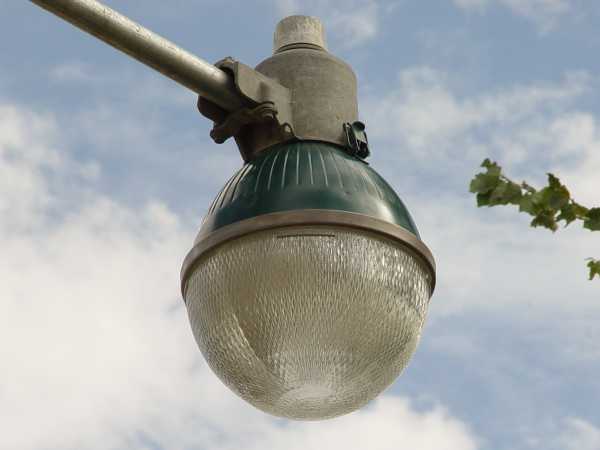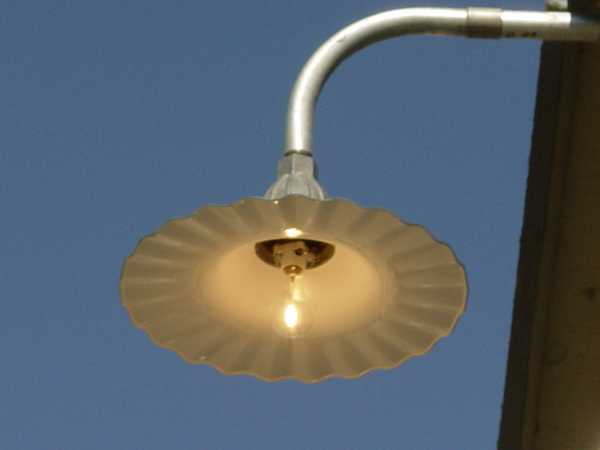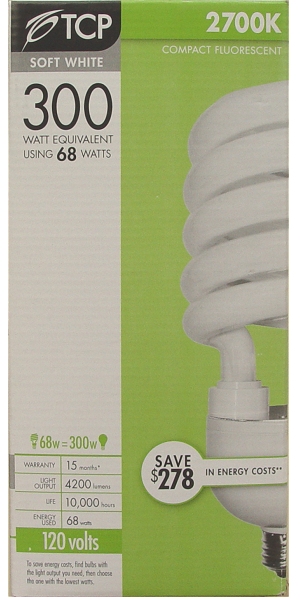Concepts for repurposing
|
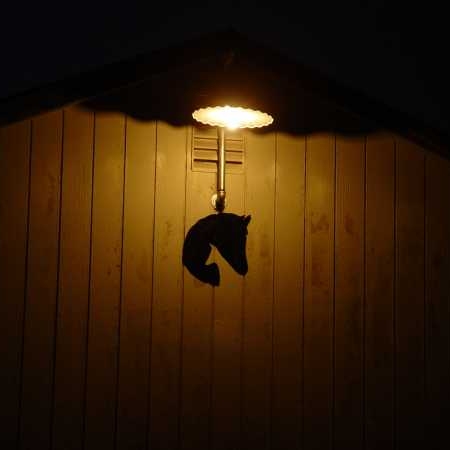
|
|
This feature discusses ideas for preserving and reinstalling vintage street lights for continued use. Please use common sense and follow electrical codes when making such installations. An information sheet on converting a high voltage series circuit street light to 110 volt use can be found at How to Safely Wire a High Voltage Series Street Light for 110 Volt Use.
They provide a classic look that I like. They are designed to be out in the weather. New energy saving bulbs can provide a relatively high degree of low-glare light at reasonable costs. For example, a compact fluorescent lamp that produces an equivalent of 300 watts of incandescent light only consumes about 68 watts of power while producing color rendering similar to the fixture's original incandescent bulb. CFLs also come in cooler color ranges for that "mercury vapor" look. |
1950s vintage Westinghouse AK-10 providing area and security lighting.
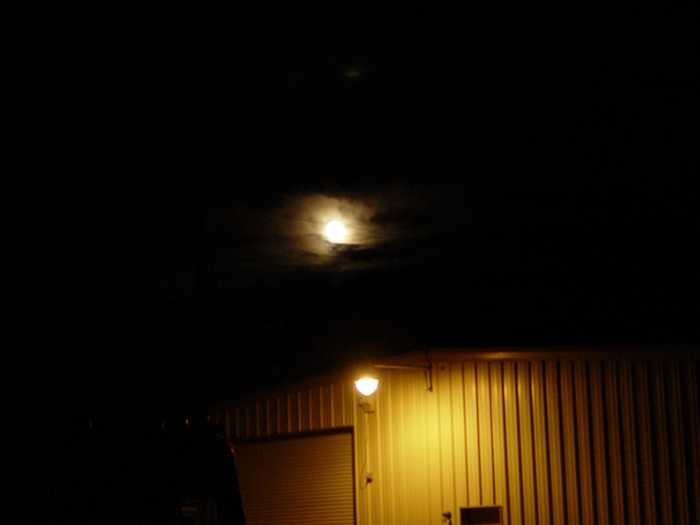
This 68 watt CFL produces an equivalent of 300 watts of incandescent light.
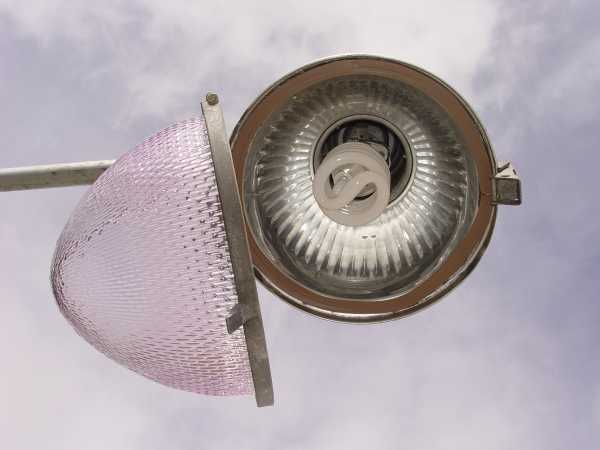
| Mounting Configurations |
|
(Note: Post mount configurations are relatively self-explanatory. The most important element is to pour a foundation sufficient to secure the lamp post being used. This feature will instead focus on the construction and installation of overhead mounted lamps.)
Vintage street lights come in a variety of shapes and sizes. Most of the overhead pendant and bracket mount luminaires come with 1¼ inch diameter slip (clamp type) or threaded fitters. Luminaires that have their own photoelectric (dusk to dawn) controls typically utilize side mount slip fitters and attach to horizontal bracket arms. Luminaires not equipped with photoelectric controls can either have side mount slip fitters or pendant mount threaded fitters. |
Typical luminaire with photoelectric control.
|
Typical pendant mount luminaire.
|
| Some luminaires designed for high output on large mast arms to illuminate arterial streets may have 2 inch slip fitters. These can be easily adapted to 1¼ inch threaded bracket arms. |
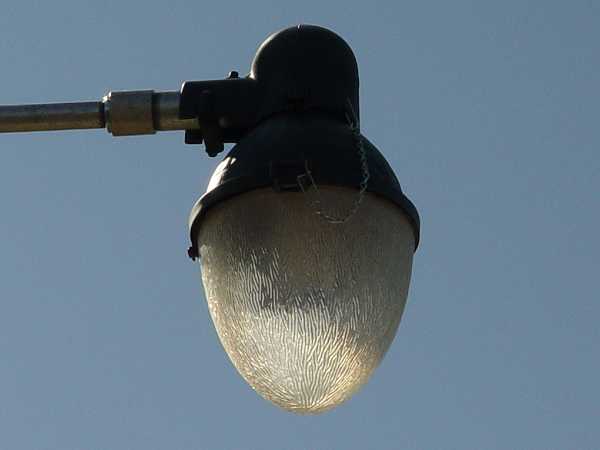
| Placement Considerations |
| Also some consideration should be given as to location in order to provide the best coverage from the light produced, such as mounting at corners of buildings. |
Optimal mounting for area and security lighting.
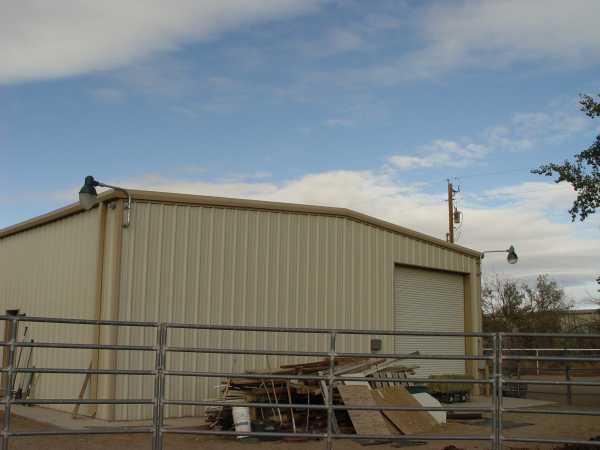
| You may get lucky and acquire an original bracket arm for mounting a vintage lamp. Otherwise, steel or galvanized pipe can be used. There will be quite a bit of weight at the end of the bracket arm, and the installation must withstand wind during storms, so pipe of 40 gauge or having equivalent strength should be used. I do not recommend lag bolting bracket arms to posts or buildings. Original bracket arms should have at least one through bolt. Home-made arms should have suitable vertical bracing and if mounted using floor flanges, the top flange should be secured with through bolts that are passed through a sufficiently strong structural component. The bottom flange can be secured with tech screws or wood screws as may be appropriate. |
Secure mounting and use of appropriate bracing hardware are critical.
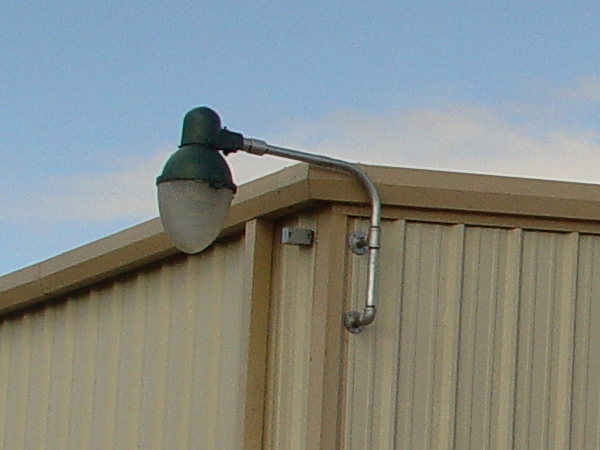
Gable mount of a smaller luminaire using a floor flange and support strap.
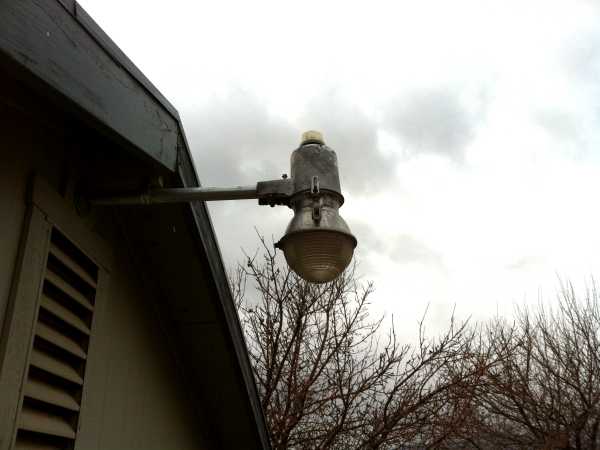
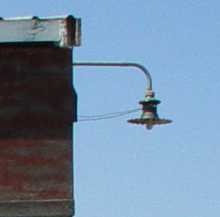 For decades I've used vintage street lights for use around the ranch and home for security and area lighting.
For decades I've used vintage street lights for use around the ranch and home for security and area lighting.
